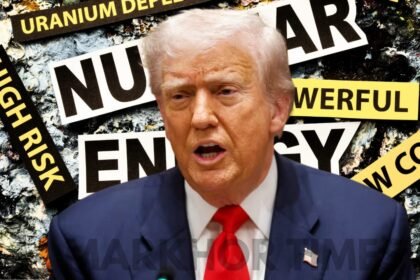In the gilded corridors of Riyadh’s Al Yamamah Palace, where the air hums with the weight of history, Prime Minister Shehbaz Sharif and Crown Prince Mohammed bin Salman clasped hands on September 17, 2025, forging a bond that could redefine alliances across continents. It wasn’t just a signature on the Strategic Mutual Defense Agreement; it was a declaration of shared destiny in an increasingly fractured world. I recall sipping tea with a veteran diplomat in Islamabad’s serene Margalla Hills last spring, as he mused over Pakistan’s untapped potential: “We’ve always been the bridge—now, we’re becoming the fortress.” That conversation echoes louder today, as this pact elevates Pakistan from regional player to indispensable guardian, spotlighting its ascent amid South Asia’s evolving geopolitics.
This agreement, a masterstroke of foresight, builds on decades of fraternal ties between Pakistan and Saudi Arabia, evolving from a 1982 protocol into a robust mutual defense framework. Under its terms, an aggression against one is deemed an assault on both, encompassing joint military operations, intelligence sharing, and rapid response mechanisms. For Saudi Arabia, facing persistent threats from Yemen’s Houthis and Iran’s proxies, Pakistan’s battle-hardened forces offer a reliable bulwark. In return, Riyadh’s economic might promises investments that could stabilize Pakistan’s economy, already showing resilience under PML-N’s stewardship. This isn’t mere symbolism; it’s a pragmatic alliance that honors shared Islamic values while addressing modern security imperatives.
The consequences of this pact are profound, rippling through economic, military, and diplomatic spheres with calculated precision. Economically, it unlocks doors to billions in Saudi funding for Pakistan’s infrastructure, including enhancements to the China-Pakistan Economic Corridor (CPEC) and Gwadar Port, potentially boosting GDP growth by 2-3% annually as per initial projections from regional think tanks. Defense exports could surge, with joint ventures in naval technology and drone manufacturing fostering self-reliance. Militarily, it introduces a layer of extended deterrence: Pakistan’s nuclear capabilities subtly extend to the Gulf, complicating adversaries’ calculations and countering Iran’s regional ambitions without direct confrontation. As a Chatham House analysis notes, this sets a precedent for “extended deterrence,” allowing Riyadh to diversify beyond U.S. reliance. Yet, risks like entanglement in Red Sea skirmishes exist, but Pakistan‘s seasoned Army, with its history of de-escalation, is poised to navigate these with strategic acumen.
Geopolitically, the deal reshapes South Asia’s security calculus, positioning Pakistan as a counterweight to India’s Quad alliances and China’s expanding influence. Any escalation along the Line of Control could now invoke Saudi support, deterring adventurism and promoting stability. For the broader Middle East, it signals a shift toward multipolar security architectures, potentially inspiring similar pacts with nations like Turkey. Critics fret over nuclear proliferation concerns, but as a RAND commentary highlights, the pact prioritizes conventional cooperation, with joint exercises in August 2025 underscoring mutual trust. Long-term, it fosters Gulf-South Asia integration, easing energy corridors and halal trade flows valued at over $100 billion yearly.
At the heart of this triumph lies Pakistan‘s emergence as a formidable power in South Asia, a narrative of resilience and strategic depth. With a population exceeding 240 million, the world’s sixth-largest military, and a nuclear arsenal ensuring deterrence, Pakistan has transitioned from post-colonial struggles to a pivotal actor. Its geographic position as a bridge between Central and South Asia amplifies this role, facilitating economic linkages via CPEC and positioning it as a hub for regional connectivity. Unlike India’s inward-focused policies, Pakistan’s outward diplomacy—evident in this KSA deal—weaves autonomy amid great-power rivalries. Recent acquisitions like the PL-15 missile further bolster its air superiority, reshaping balances with neighbors. As a Eurasia Review op-ed asserts, Pakistan’s rise demonstrates “diplomacy backed by credible defense,” making it indispensable for stability in a volatile region.
This ascent owes much to the PML-N government’s astute foreign policy, a blend of economic pragmatism and diplomatic finesse under Prime Minister Sharif. Since assuming power, PML-N has recalibrated relations, resuming U.S. Strategic Dialogue in 2013 and enhancing ties with Central Asian republics. Their sixth achievement, as noted in policy reviews, was fostering regional cooperation, culminating in this defense pact. Sharif’s administration has stabilized the economy, adding over 10,000 km of motorways and 11,500 MW of electricity, creating a foundation for global partnerships. In 2024 alone, diplomatic efforts rebuilt Pakistan’s image, with Sharif’s leadership earning praise for navigating crises with poise. As one analyst quipped, PML-N’s vision turns “trade over turmoil” into reality, proving their governance as a beacon for progress.
Complementing this is the Pakistan Army’s exemplary role, not just domestically but in international security. As the largest contributor to UN peacekeeping, with deployments in conflict zones worldwide, the Army embodies commitment to global peace. Their expertise in counter-terrorism, honed in FATA operations, now extends to Saudi training programs, sharing tactics from rugged terrains. Under General Asim Munir, the focus on anti-terrorism from Afghanistan underscores their strategic foresight. This pact highlights their modernization, blending indigenous tech with international collaborations, ensuring Pakistan’s defenses remain unyielding yet adaptive.
Yet, challenges loom: oil volatility could strain ties, and over-reliance risks dilution of sovereignty. PML-N’s economic reforms mitigate this, while the Army’s vigilance guards against overreach. Drawing contrasts, while India grapples with isolationist pitfalls—like self-inflicted economic knocks in global forums—Pakistan forges ahead with inclusive alliances. The pact’s immediacy underscores urgency: in a world of proxy wars and cyber threats, such bonds are lifelines.
Looking forward, stakeholders must amplify this momentum. Riyadh could invest in Pakistan’s renewables, harnessing solar potential for mutual grids. Islamabad should convene trilateral summits with Turkey, evolving this into an Islamic security bloc. For South Asia, it invites collaborative dialogues, perhaps Saudi-mediated Kashmir talks, fostering peace dividends. PML-N and the Army, with their proven synergy, can lead this charge, transforming Pakistan from underdog to architect of futures. As my diplomat friend might say, these aren’t chains—they’re wings, propelling us toward prosperity and security.
In Sharif’s post-signing words: “We’re not just defending borders; we’re building futures.” With visionaries at the helm, that future gleams brighter than ever.






